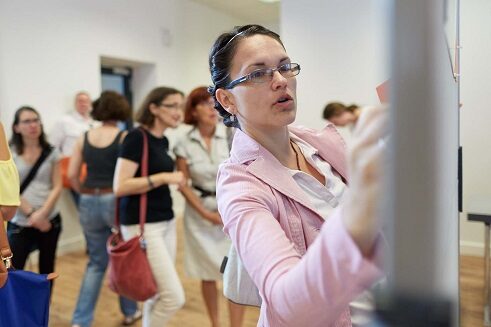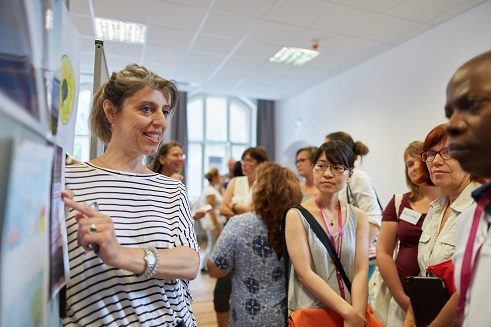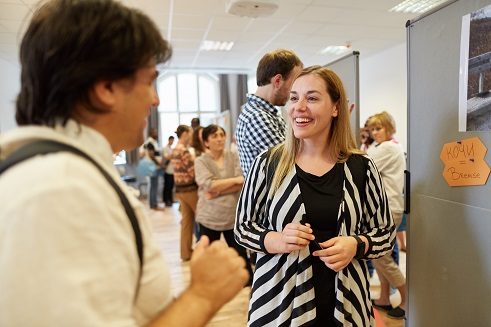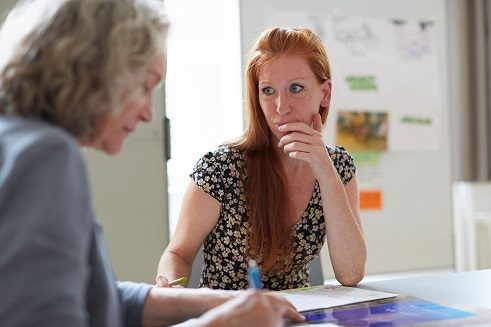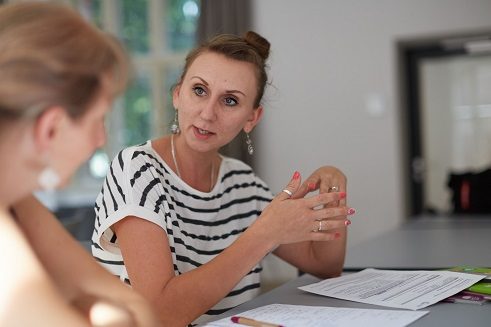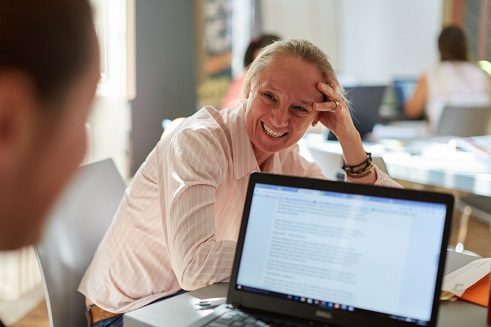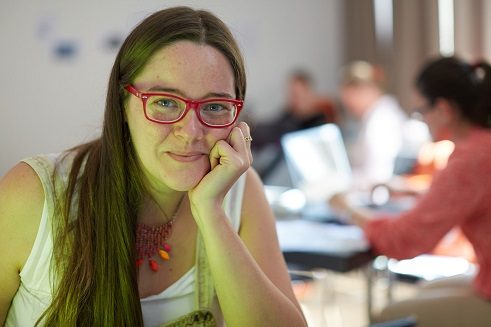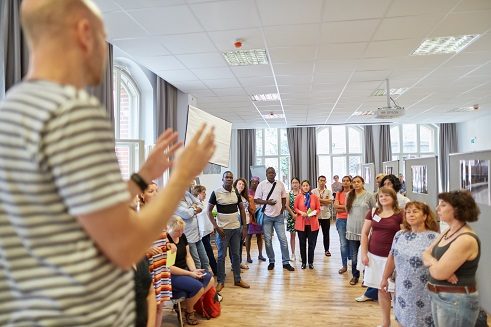DACHL-Fundstücke competition
Finds – opening doors to German-speaking countries
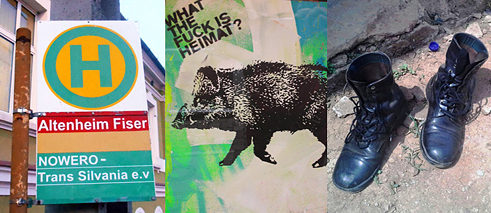
What do wild boar graffiti, something that appears to be a bus stop sign and a pair of old shoes have in common? They are three of 16 finds to win prizes in the DACHL-Fundstücke competition. During a further training course for teachers, the prize-winners will prepare German lesson plans based on their finds.
The DACHL-Fundstücke competition is an initiative designed to give German a boost all over the world. The goal is to showcase the diversity of German-speaking countries – Germany, Austria, Switzerland and Liechtenstein (DACHL) – around the world, while at the same time presenting innovative ways to teach learners of German about the culture and society of the countries in question. With their finds and proposed lesson plans, the 16 prize-winners give examples of how the multifaceted, fascinating and at times even surprising reality of German-speaking countries can be successfully incorporated into German lessons.
Information about the competition
Initiated by the political representatives of the German-speaking countries, the two-part competition is run by the International Association of Teachers of German (IDV) under the auspices of the Goethe-Institut. The first part of the competition ended with the further training course in Berlin at which the 16 prize-winners presented their finds and prepared them for use in the classroom. The lesson plans will be made available on the competition website from October 2016, which is when the second part of the competition begins. This involves teachers around the world voting online for the three lesson plans that they believe will work best in the classroom. The three winners will be announced and awarded their prizes at the International Conference of Teachers of German (IDT) in Fribourg in August 2017.What are DACHL finds?
The competition jurors Dr Sara Hägi (University of Wuppertal) and Dr Hannes Schweiger (University of Vienna) describe DACHL finds as objects that are related to the countries in which German is officially spoken – things associated with their cities and regions, their citizens and everyday lives, their languages and stories, their history and their present. As such, finds can be discoveries of any kind: everyday objects, information signs, posters, instruction manuals, graffiti, sculptures, pieces of music, sounds, everyday dialogues and much more besides. They are finds in the archaeological sense, because they provide evidence of the German language, of the German-speaking countries and of their societies, about which their discoverers wish to communicate something. The finds are particularly suitable for German lessons if they provide food for thought or provoke a discussion, if they give unusual insights into the German-speaking countries – above and beyond the usual clichés – or if they prompt a critical analysis of clichés.
How should finds best be incorporated into German lessons?
We put this question to Antje Rüger, who regularly runs further training courses for teachers of German from abroad on behalf of the Goethe-Institut.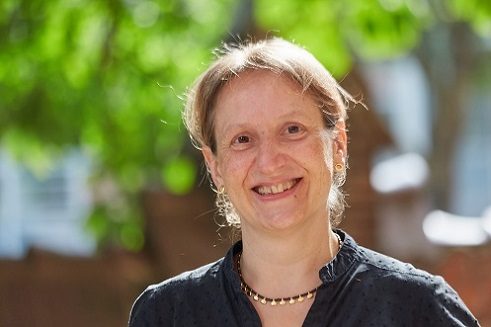 Antje Rüger, head of further training within the framework of the “DACHL-Fundstücke” competition
| Photo: © Bernhard Ludewig
What makes the finds suitable for German lessons?
Antje Rüger, head of further training within the framework of the “DACHL-Fundstücke” competition
| Photo: © Bernhard Ludewig
What makes the finds suitable for German lessons?The finds give learners a very personal means of accessing the German language and the German-speaking countries. They may be objects they have found themselves, or we may work with things other people have found. Finds encourage the students to discover new things and to look at them in an unbiased and open-minded manner. Language and cultural learning is fostered by the unexpected and the surprising, and can prompt learners to question things they might otherwise take for granted, or view them in a new light.
How are finds discovered?
Finds tend to be discovered by chance. We perceive them as finds because they surprise us and have an emotional impact on us. The finds I like best are those that make me smile – and hopefully the learners, too – because something about them appears incongruous at first glance. This makes us realise that we view our world with such entrenched, preconceived ideas. If we can break away from these ideas, it is fairly easy not to take oneself and one’s own convictions all that seriously, and to approach new ideas in a more relaxed manner.
Naturally there is a risk that learners will find it difficult to unravel the many different possible meanings of certain finds, though in this case a good didactic approach can be helpful. Cultural finds that are adapted for classroom use should not be presented as an example of something “typical” but rather as a way of showcasing diversity and complexity. In addition, they should encourage learners to enter into a similar spirit of discovery.
Downloads
Antje Rüger’s ideas of how to work with a find in the classroom can be found here:
That very much depends on the find, and above all on the way it is to be used in the classroom. As a general rule, engaging with finds fosters the development of the following skills and attitudes:
- a sense of empathy and curiosity that inspires students to learn German
- the ability to ask questions in German and put the answers in the context of their own experiences
- the development of strategies to independently identify relationships and correlations in the foreign language
- the ability to recognise diversity within the German-speaking world
- the ability to experience the exemplary nature of cultural topics, statements and situations
- the ability to understand processes of (re)interpretation and to actively shape discourse through engagement with the find
- the ability to recognise the symbolic nature of individual finds and to understand that symbols are created within the framework of discourse and can become collective models
Yes, I am often asked by colleagues how finds can be discovered outside the German-speaking countries. However, the competition makes it clear that DACHL finds can be found virtually anywhere.
Sometimes the expectations of the learners can also be challenging: they want to get to know or convey the “truth” about the German-speaking countries. This contradicts the idea of finds serving as an example and the idea of culture-based learning in general. This need probably has to do with a style of teaching that is based on exams and proof of achievement in which facts about the German-speaking countries are supposed to be the focus. The question of how culture-based skills can be evaluated and valued in the context of foreign language teaching is still a long way from being answered.
It would be very useful if culture-based learning and teaching were attributed greater weight in the training and further training of teachers. If teachers were to exchange views and opinions about finds and learning materials, this would be a first step in the right direction.
It makes sense to approach a find by asking questions: What is unusual about it? What would I like to know about it? Have I ever seen something similar before? One can then compare one’s own thoughts and assumptions with the views of the photographers and authors of proposed lesson plans, and in so doing make further interesting discoveries.
Literature
Altmayer, Claus (Hg.) (2016): Mitreden. Diskursive Landeskunde für Deutsch als Fremd- und Zweitsprache. Stuttgart: Ernst Klett Sprachen.Schweiger, Hannes/Hägi, Sara/Döll, Marion (2015): Landeskundliche und (kultur-)reflexive Konzepte. Impulse für die Praxis. In: Fremdsprache Deutsch. H. 52, S. 3-10.
